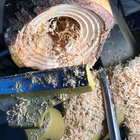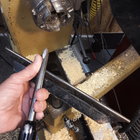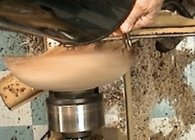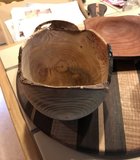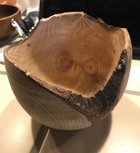Greetings rotational gurus,
I’m having an ongoing issue with the entry cuts in some irregular natural edge bowls that I’m working on. The material is Mugo Pine and at first I was trying to “ride the bevel” and the gouge would get slammed, then I’ve started to do a scraping cut with the tip of my swept bask gouge which seems to help. Im wondering if it would work to sneak up on the edge from inside the bowl.
Getting the thickness of the rim established before going deeper into the form would be preferred method but I’m having trouble knocking the edge into tomorrow. When the rim has 2 coplanar edges isn’t as big a problem.
Also, sometimes I loose track of where the tip of the tool is and bang it into the bowl, creating more problems! That issue I’m making some headway on.
Best, Spike
I’m having an ongoing issue with the entry cuts in some irregular natural edge bowls that I’m working on. The material is Mugo Pine and at first I was trying to “ride the bevel” and the gouge would get slammed, then I’ve started to do a scraping cut with the tip of my swept bask gouge which seems to help. Im wondering if it would work to sneak up on the edge from inside the bowl.
Getting the thickness of the rim established before going deeper into the form would be preferred method but I’m having trouble knocking the edge into tomorrow. When the rim has 2 coplanar edges isn’t as big a problem.
Also, sometimes I loose track of where the tip of the tool is and bang it into the bowl, creating more problems! That issue I’m making some headway on.
Best, Spike

